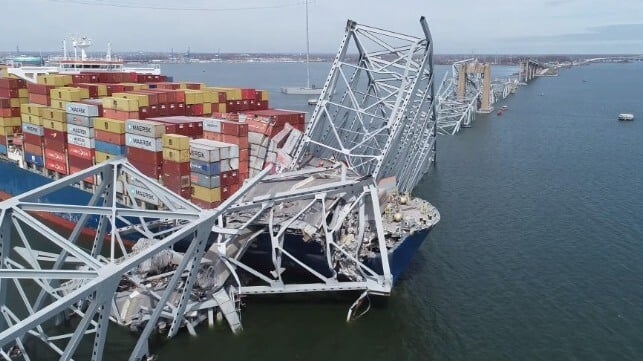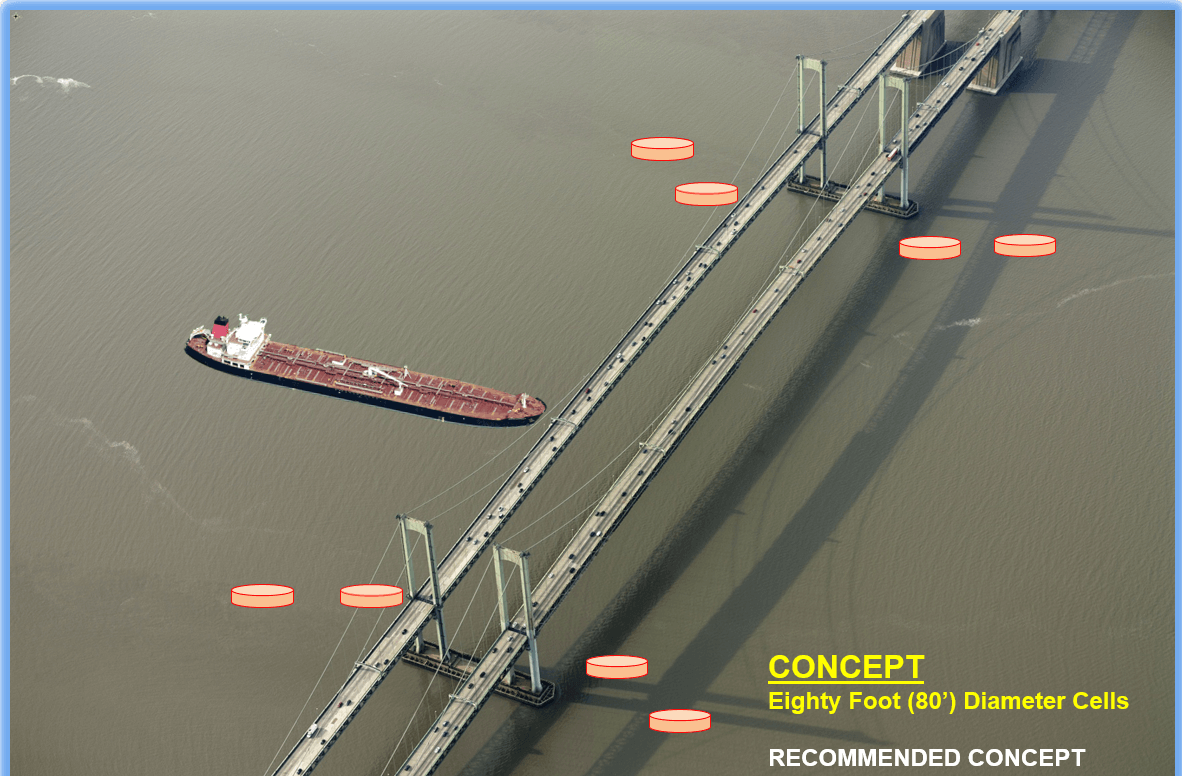In Baltimore, Ship Strike "Never Occurred to Anybody"; In Delaware, It Did
Two former Maryland transport officials told the Washington Post that the state didn't consider the risk of an allision at the Key Bridge

Nine years ago, in 2015, Delaware's bridge transport authority set aside $2.5 million to design new protective fenders for the Delaware Memorial Bridge. Tankers and boxships on the Delaware River were getting bigger, and the New Panama Canal would be bringing even larger ships to the Port of Wilmington soon.
In the unlikely event that one of these ships hit the Delaware Memorial Bridge's piers, it could potentially collapse the bridge, a Delaware River and Bay Authority spokesman told local media at the time. About 100,000 vehicles cross the eight-lane bridge every day, and it is vital to the region's economy.
This was too much risk for the DRBA. The agency hired consultants to design new protective bumpers of steel and rock (dolphins), and won a federal grant for $22 million to help pay for construction. The design spec for the new dolphins was intended to defend against a ship of up to 156,000 tonnes, moving at a speed of up to seven knots.
 Illustration courtesy DRBA
Illustration courtesy DRBA
“[We've] come to the conclusion that these are the kind of protections that our bridges need,” Shekhar Scindia, a DRBA structural engineer, told Delaware Online in 2017. “Our complete preliminary design has been based on the calculations directed by the current code.”
They bundled the dolphin project into a large package of renovations, secured a permit from the Corps of Engineers, raised tolls on motorists, convinced two state governors to sign off on the cost, and issued bonds to raise funds. (This was not easy: New Jersey's governor initially vetoed the toll hikes, and DRBA had to negotiate to get the funding.)
Construction started on the eight protective steel-and-rock dolphins last year and should be done by 2025. The final cost will come to about $93 million.
“It never occurred to anybody”
On Tuesday, Baltimore's Francis Scott Key Bridge was struck by the Dali, a 10,000 TEU boxship. According to NTSB, she displaced (weighed) about 112,000 tonnes that day, including cargo, fuel and ballast - about 35,000 tonnes less than her maximum load. At about 0130, she slipped past the small dolphin on the bridge's southwest side, making about eight knots. When she hit the pier on the main span's support, the bridge collapsed within about 30 seconds, killing six and shutting down the ship channel with wreckage. The estimated cost of the casualty is in the range of $2-4 billion.
Four decades ago, the risk of a pier strike like this was on the minds of Maryland's highway engineers. In 1980, after a tanker struck and collapsed Florida's Sunshine Skyway Bridge, the Baltimore Sun quoted Maryland's top transport engineer saying that "a direct hit - it would knock [the Key Bridge] down."
But that hazard appears to have been forgotten in Maryland in recent years, two former highway agency officials told the Washington Post - even though the Key Bridge faced a similar threat as the Delaware Memorial Bridge, just 60 miles away on the same freeway system.
The idea of a ship hitting a pier on Baltimore's Key Bridge “never occurred to anybody," a former senior transport official told the Post. In recent years, risk-management conversations about the Key Bridge focused on acts of terror, like truck bombs, reflecting the post-9/11 security planning of the era, the official said.
The Dali allision involved approximately the same ship size, speed and outcome that Delaware authorities have been working to defend against at the Delaware Memorial Bridge since 2015. But even if Maryland transport officials had followed Delaware's lead, it is not clear that they could have done anything, engineering experts told the Washington Post. The center span on the Key Bridge is narrow, and installing protective dolphins or fenders would make it even narrower.
"That’s a pretty tight channel,” a former state transport official told the Post. "You might actually create a hazard rather than mitigate one."
Cost is also a factor. Engineers have to work within a budget, and the outside risk of a vessel strike has to compete with all the other risks and costs in the transport system, like traffic safety improvements and roadway repairs.
The National Transportation Safety Board - which first warned about the need for bridge pier protection in 1981 - is looking at the fender arrangements of the Key Bridge as part of its investigation.
The opinions expressed herein are the author's and not necessarily those of The Maritime Executive.
